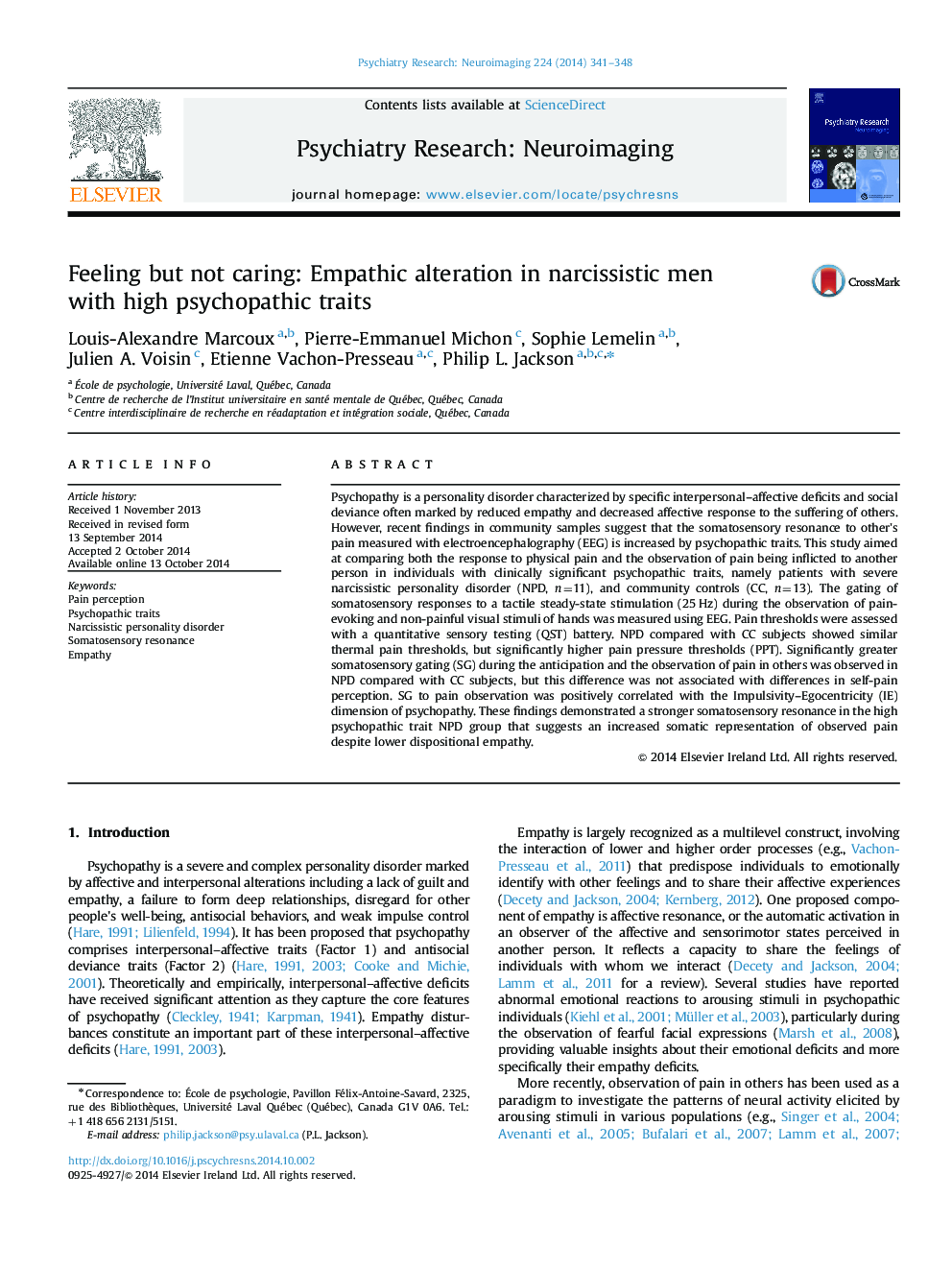| Article ID | Journal | Published Year | Pages | File Type |
|---|---|---|---|---|
| 334770 | Psychiatry Research: Neuroimaging | 2014 | 8 Pages |
•Psychopathic individuals often show reduced empathy and decreased affective response to the suffering of others.•However, recent findings show somatosensory resonance to other׳s pain measured with electroencephalography (EEG) is increased by psychopathic traits.•Gating of somatosensory responses during observation of pain-evoking stimuli was compared in patients with severe narcissistic personality disorder (NPD) and community controls.•Findings demonstrated a stronger somatosensory resonance in the high psychopathic trait NPD group, suggesting an increased somatic representation of observed pain despite lower dispositional empathy.
Psychopathy is a personality disorder characterized by specific interpersonal–affective deficits and social deviance often marked by reduced empathy and decreased affective response to the suffering of others. However, recent findings in community samples suggest that the somatosensory resonance to other׳s pain measured with electroencephalography (EEG) is increased by psychopathic traits. This study aimed at comparing both the response to physical pain and the observation of pain being inflicted to another person in individuals with clinically significant psychopathic traits, namely patients with severe narcissistic personality disorder (NPD, n=11), and community controls (CC, n=13). The gating of somatosensory responses to a tactile steady-state stimulation (25 Hz) during the observation of pain-evoking and non-painful visual stimuli of hands was measured using EEG. Pain thresholds were assessed with a quantitative sensory testing (QST) battery. NPD compared with CC subjects showed similar thermal pain thresholds, but significantly higher pain pressure thresholds (PPT). Significantly greater somatosensory gating (SG) during the anticipation and the observation of pain in others was observed in NPD compared with CC subjects, but this difference was not associated with differences in self-pain perception. SG to pain observation was positively correlated with the Impulsivity–Egocentricity (IE) dimension of psychopathy. These findings demonstrated a stronger somatosensory resonance in the high psychopathic trait NPD group that suggests an increased somatic representation of observed pain despite lower dispositional empathy.
